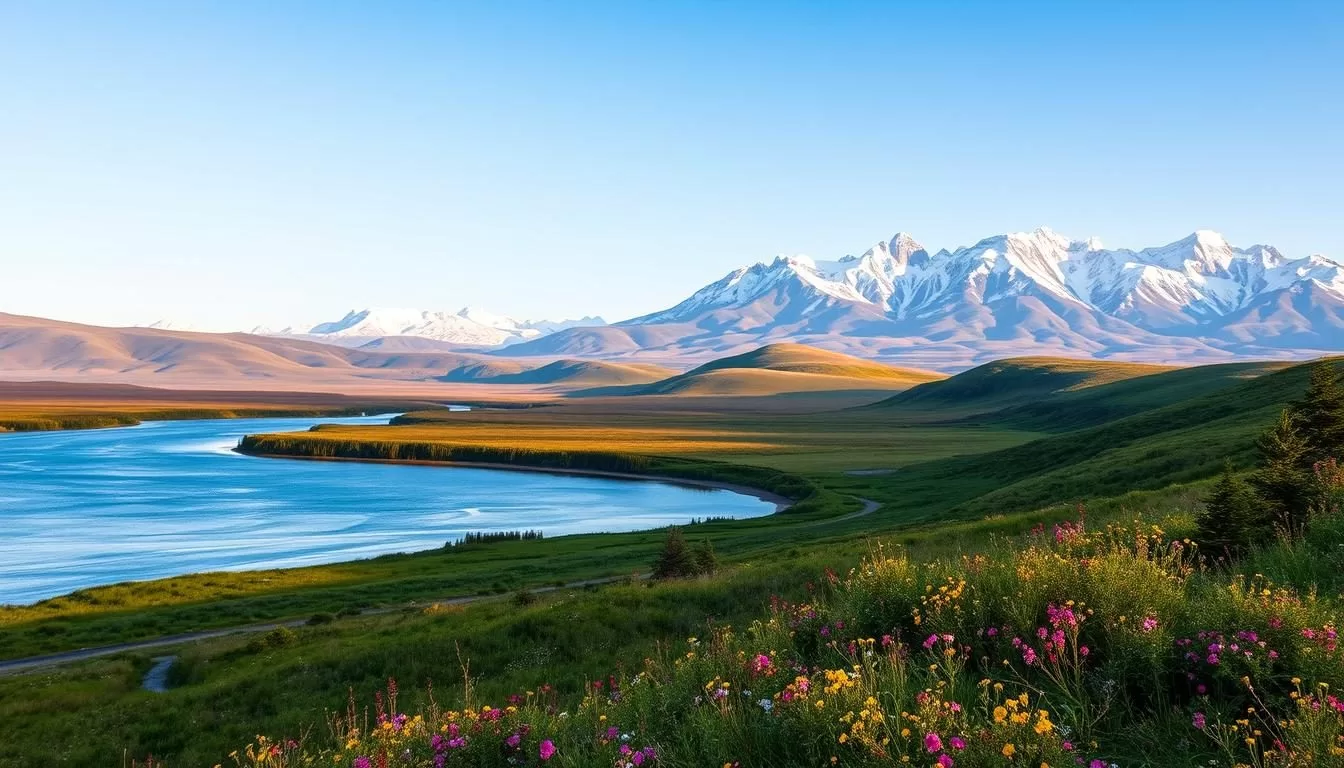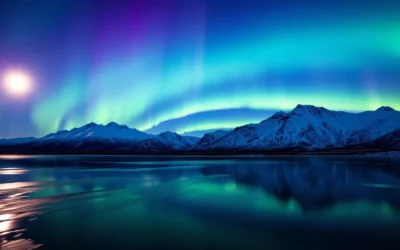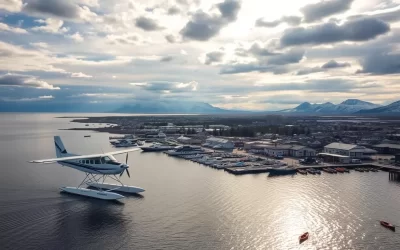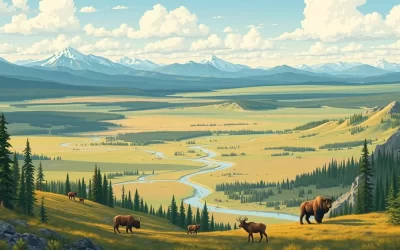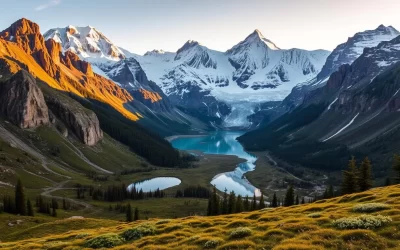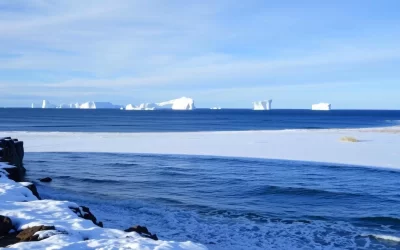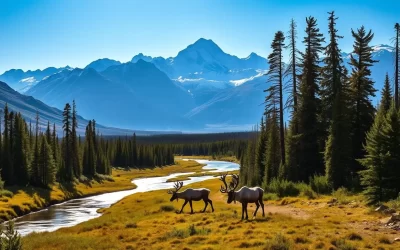✓ Accommodations✓ Flights✓ Rental Cars✓ Tours & Activities
Are you ready for an adventure in one of North America’s last true wilderness frontiers? The Northwest Territories offer an unparalleled opportunity to experience pristine landscapes and extreme seasonal variations. With temperatures ranging from sweltering summer highs to winter lows of -50°C, understanding the weather patterns is crucial for planning a successful trip.
Each season in the Northwest Territories brings unique experiences, from the midnight sun of summer to the dancing Northern Lights of winter. This comprehensive guide will help you determine the best time to visit based on your weather preferences and desired activities, ensuring your trip is nothing short of extraordinary.
Discovering the Land of Contrasts
The Northwest Territories (NWT) is a land of vast contrasts, where the extremes of nature create unforgettable experiences. As you prepare to visit NWT, you’re not just planning a trip; you’re embarking on an adventure that will be shaped by the land’s diverse climates and weather patterns.
A Pristine Wilderness Awaiting Exploration
The NWT spans over 1.3 million square kilometers, offering a vast and varied landscape. The territory’s immense size means that it encompasses multiple climates, from subarctic in the south to polar in the north. This diversity creates a season surreal unforgettable experience, regardless of when you visit.
- Experience the dramatic seasonal variations that make each time of year unique.
- Discover how the weather affects the activities you can enjoy and the regions you can explore.
Why Weather Matters in Your NWT Adventure
Understanding the NWT’s weather is crucial for a successful trip. The territory’s climate isn’t just about comfort; it determines the activities you can do and the sights you can see. With weather conditions varying significantly across the territory, being prepared is key to a safe and enjoyable journey.
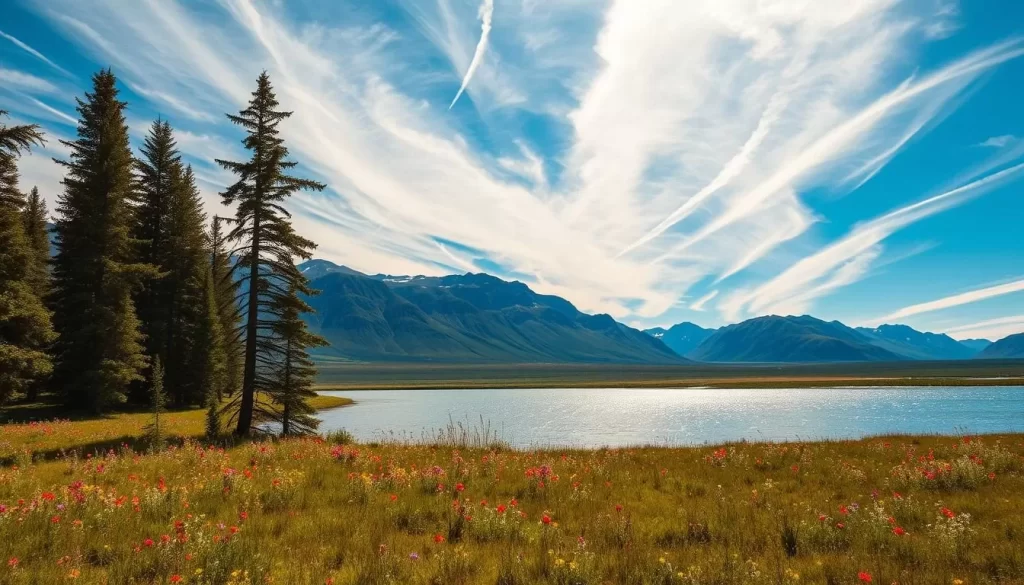
Northwest Territories, Canada: Best Months for a Weather-Savvy Trip
When planning your trip to the Northwest Territories, Canada, understanding the best times to visit can significantly enhance your experience. The region’s climate varies dramatically across seasons, each offering unique adventures and landscapes.
Summer (June-August): The Season of Midnight Sun
Summer in the Northwest Territories brings the phenomenon of the midnight sun, where the sun remains visible at midnight, providing 24-hour daylight. This period is ideal for hiking, fishing, and exploring the vast wilderness. The temperatures are relatively mild, making it a great time for outdoor activities.
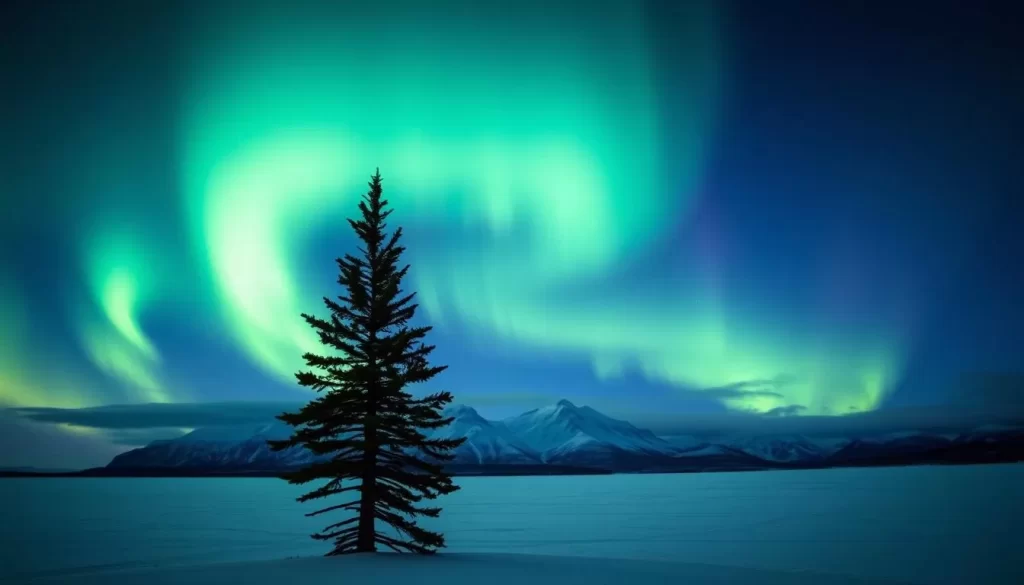
Winter (December-March): Prime Time for Northern Lights
Winter transforms the Northwest Territories into a magical landscape, perfect for viewing the northern lights or aurora borealis. The cold, clear air and minimal light pollution make it an ideal location for this natural spectacle. You can enjoy activities like dogsledding, snowmobiling, and ice fishing, making winter a prime tourist season. The cold temperatures, ranging from -20°C to -40°C, are manageable with proper clothing, making colder months a great time to visit.
| Season | Activities | Weather |
|---|---|---|
| Summer (June-August) | Hiking, Fishing, Exploring | Mild Temperatures, 24-hour Daylight |
| Winter (December-March) | Dogsledding, Snowmobiling, Ice Fishing | Cold Temperatures (-20°C to -40°C), Clear Skies |
Summer Adventures: When Temperatures Rival Hawaii
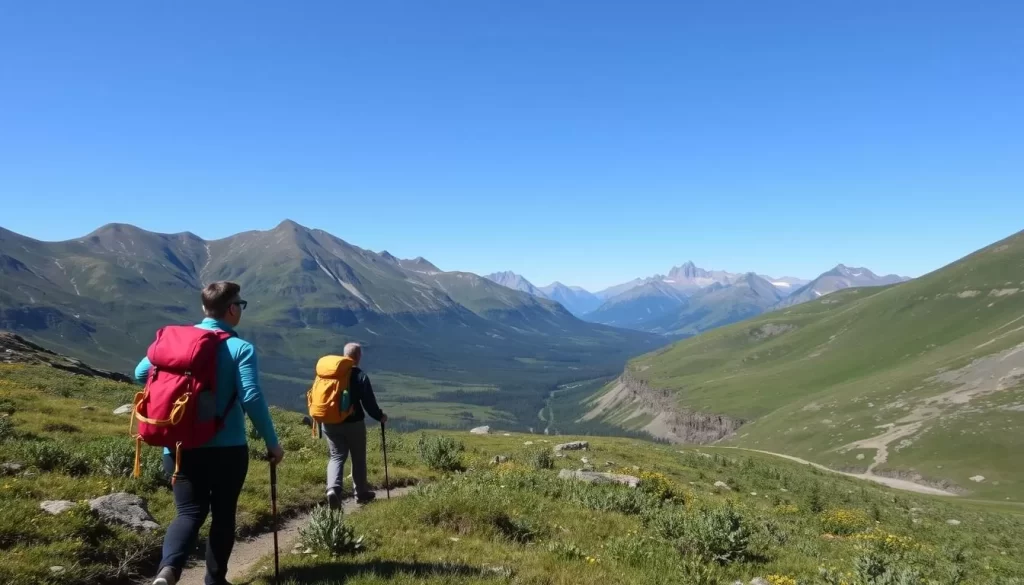
Summer in the Northwest Territories is a time of warmth and endless possibility. You can enjoy a wide range of activities under the midnight sun, from hiking and camping to fishing and canoeing.
June to August: Peak Tourist Season
The summer months are the peak tourist season in the NWT, with warm temperatures and long days. You can explore the beautiful landscapes, visit NWT communities, and experience the local culture. It’s the perfect time to bring your sense of adventure and enjoy the great outdoors.
Summer Packing Essentials for the NWT
When visiting the Northwest Territories in the summer, it’s essential to pack wisely. Don’t forget to bring sunscreen for the sun, insect repellent for mosquitoes and black flies, and bear spray if you plan to venture into the backcountry. Layered clothing is also crucial due to the potential cool nights. By being prepared, you can fully enjoy your visit to the Northwest Territories and make the most of your trip to visit Northwest Territories.
Fall in the Northwest Territories: A Colorful Transition
As the seasons change, the Northwest Territories transform into a kaleidoscope of colors. The fall season brings a unique blend of adventure and tranquility to this Canadian region.
September to October: Vibrant Landscapes and Early Aurora
During September and October, the Northwest Territories are painted with vibrant colors, making it an ideal time to visit and witness the breathtaking landscapes. The weather during this period is variable, with daytime temperatures ranging from 0°C to 15°C.
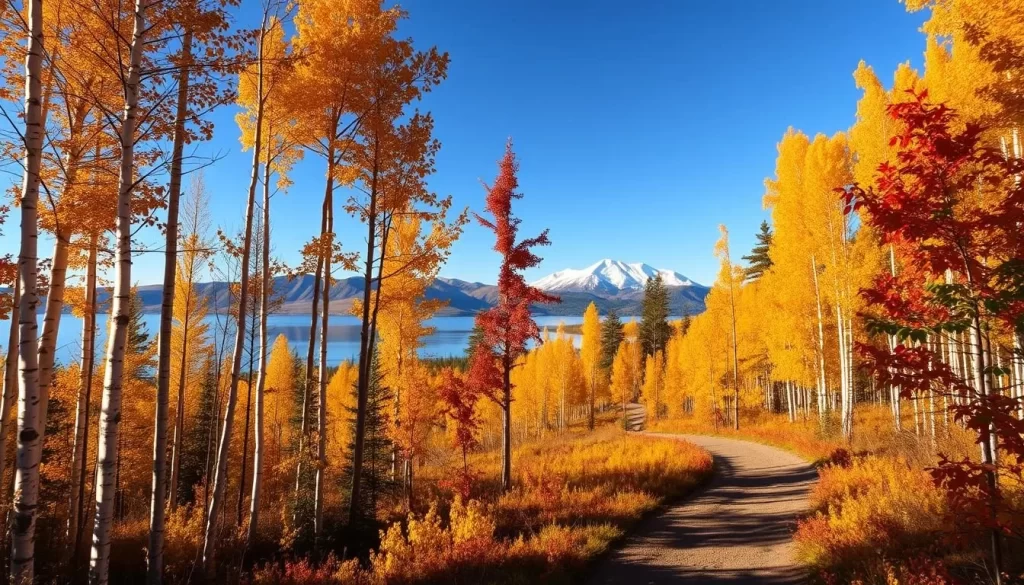
Fall Activities and Weather Considerations
Fall is an excellent season for hiking, with cooler temperatures and fewer insects. You can also enjoy fishing, as many species become more active as water temperatures cool. When planning your trip, consider the variable weather conditions and pack accordingly. The Northwest Territories offer a range of experiences throughout the year, and fall is a great time to explore different regions.
Winter Wonders: Embracing the Crystal-Clear Cold
The crystal-clear cold of the Northwest Territories in winter is an experience unlike any other. Winters here are very cold, but the advantage is that it’s mostly a dry cold. Winter days are often sunny and windless.
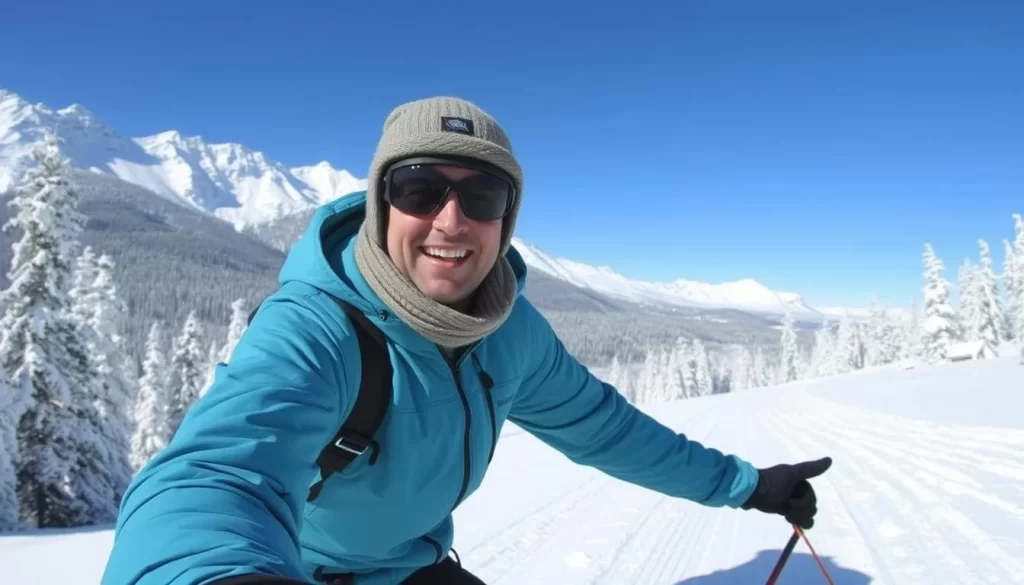
November to March: The Northern Lights Season
This period is prime time for viewing the Aurora Borealis. The clear winter skies offer optimal conditions for witnessing this natural phenomenon. With the right gear, you can enjoy the spectacle while staying warm.
Winter Survival Guide: Staying Warm and Comfortable
To stay warm, it’s essential to pack the right gear: a thick parka, durable winter boots, gloves, scarf, hat, and snow pants. Proper layering is key, starting with moisture-wicking base layers, insulating mid-layers, and wind/waterproof outer shells.
- The dry cold of the NWT is more comfortable than the damp cold found in more southern regions.
- Quality winter boots rated for extreme temperatures are essential.
- Rental options for winter gear are available in NWT communities like Yellowknife.
By being prepared, you can enjoy the winter wonderland of the Northwest Territories at any time.
Spring Renewal: The Return of Daylight
Spring in the Northwest Territories is a time of renewal, marked by increasing daylight and a series of cultural festivals that showcase the region’s rich heritage. As the sun strengthens, the landscape transforms, offering a unique blend of winter’s lingering presence and the promise of warmer days to come. This period is perfect for visitors looking to experience the authentic culture and breathtaking landscapes of the NWT.
April to May: Perfect for Snow Activities
April and May are ideal months for snow activities in the Northwest Territories. You can enjoy dog sledding, snowmobiling, and other winter sports amidst the beautiful, snow-covered landscapes. The extended daylight allows for longer adventure periods, making the most of your visit to this magical region.
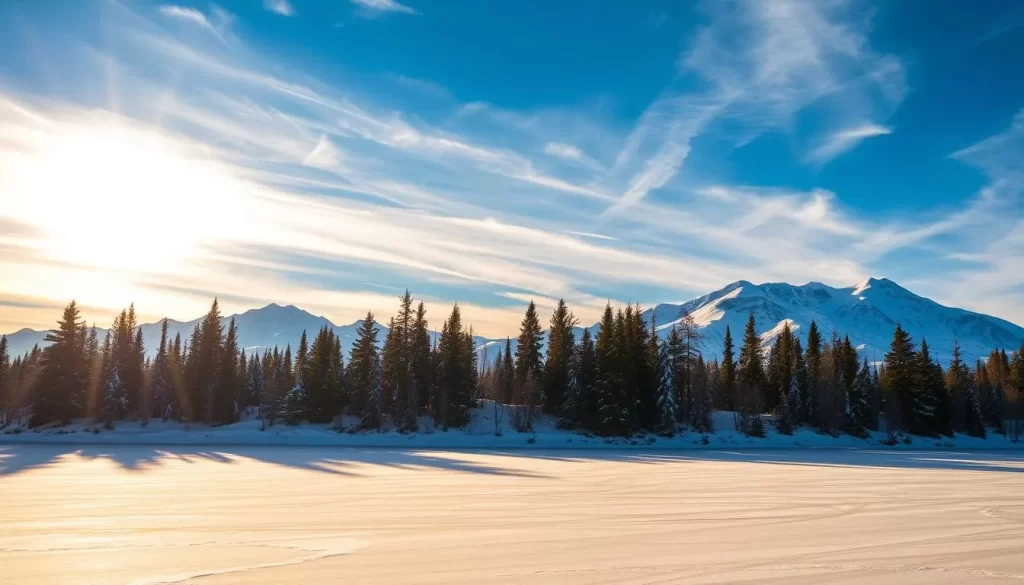
Spring Festivals and Cultural Experiences
The Northwest Territories host various spring festivals, with the Muskrat Jamboree in Inuvik being a highlight. This four-day festival celebrates the arrival of spring with traditional competitions, dancing, and cultural performances, offering a genuine glimpse into the lives of NWT communities. You can immerse yourself in Indigenous traditions and enjoy the vibrant atmosphere that comes with the return of longer days.
Regional Weather Variations Across the NWT
The NWT encompasses a broad range of climates across its vast territory. This diversity is reflected in the different regions, each with its unique weather patterns.
North Slave Region and Yellowknife
The North Slave Region, including Yellowknife, experiences subarctic climate conditions with significant temperature variations between summer and winter. This region is known for its aurora borealis displays.
Western Arctic: True Polar Climate
The Western Arctic region has a true polar climate, characterized by long, cold winters and short, cool summers. This region is ideal for viewing the northern lights.
Sahtu Region: The Heart of NWT
The Sahtu Region is known for its rugged landscape and diverse wildlife. The climate here is subarctic, with cold winters and warm summers, making it a great destination for outdoor activities like hiking and fishing.
Dehcho and South Slave Regions
The Dehcho and South Slave regions feature a subarctic climate with the warmest temperatures in the territory. Nahanni National Park Reserve and the Mackenzie River are notable attractions. Communities like Hay River serve as gateways to the NWT’s wilderness, showcasing the region’s natural beauty. The best time to visit depends on your interests, whether it’s paddling, hiking, or viewing the aurora.
Planning Tips for Weather-Savvy Travelers
As you plan your trip to the Northwest Territories, understanding the nuances of the local infrastructure and packing the right gear can make all the difference. The Northwest Territories offer a unique experience, with each season presenting its own set of adventures and challenges.
Infrastructure Considerations
The infrastructure in the Northwest Territories varies significantly across different communities. In larger centers like Yellowknife, you can find modern amenities and services, including gear rental shops for winter boots and other essential cold-weather gear. However, in smaller communities, services may be limited, and it’s crucial to plan accordingly. Understanding these differences will help you stay warm and comfortable throughout your journey.
Essential Gear for Every Season
Packing the right gear is vital for a comfortable and safe trip. In the winter, you’ll need extreme cold weather gear, including a high-quality down parka and insulated winter boots rated to at least -40°C. For summer, don’t forget insect repellent and sun protection due to the 24-hour daylight. Spring and fall require versatile clothing that can adapt to rapidly changing conditions. Regardless of the time year you visit, every season in the Northwest Territories is surreal and unforgettable, offering a magical Northwest Territories experience.
- For winter: thermal base layers, mittens, and face protection.
- For summer: quick-dry clothing and layers for cool evenings.
- For spring and fall: waterproof outer layers and insulating mid-layers.
- Year-round: a good camera, binoculars, and a headlamp.
By understanding the infrastructure and packing appropriately for your visit, you can focus on enjoying the breathtaking landscapes and unique experiences that the Northwest Territories have to offer.
Conclusion: Every Season Offers a Unique NWT Experience
As you explore the Northwest Territories, you’ll discover that each season has its own surreal charm. From the midnight sun of summer to the aurora borealis dancing across the winter sky, every season offers a distinct experience. Whether you’re drawn to the vibrant colors of fall or the crystal-clear winter landscapes, the NWT has something special to offer.
The territory’s year-round appeal means that every season is a great time to visit Northwest Territories. With proper planning, you can enjoy world-class natural experiences in a setting that’s both breathtaking and unforgettable. So, choose your best time to visit and get ready for an adventure of a lifetime in this magical part of Canada.
The above is subject to change.
Check back often to TRAVEL.COM for the latest travel tips and deals.
